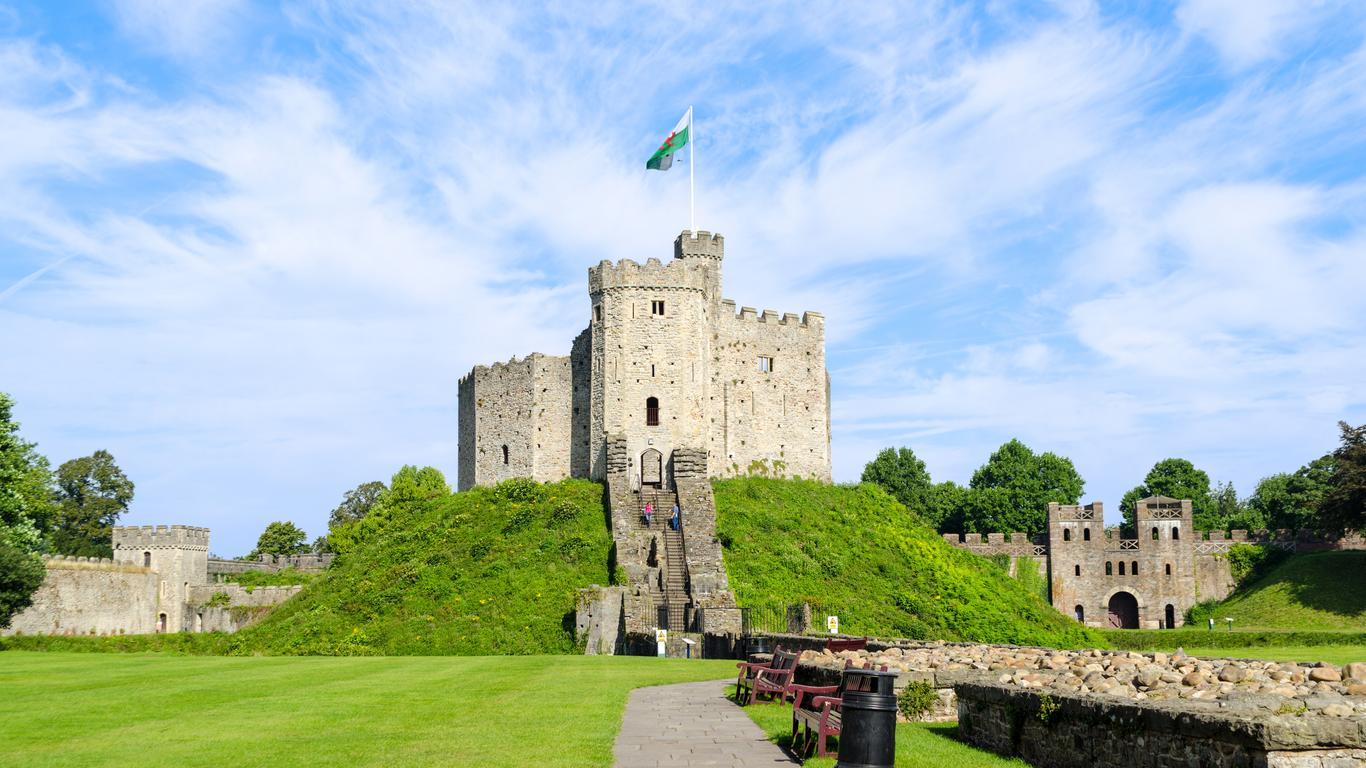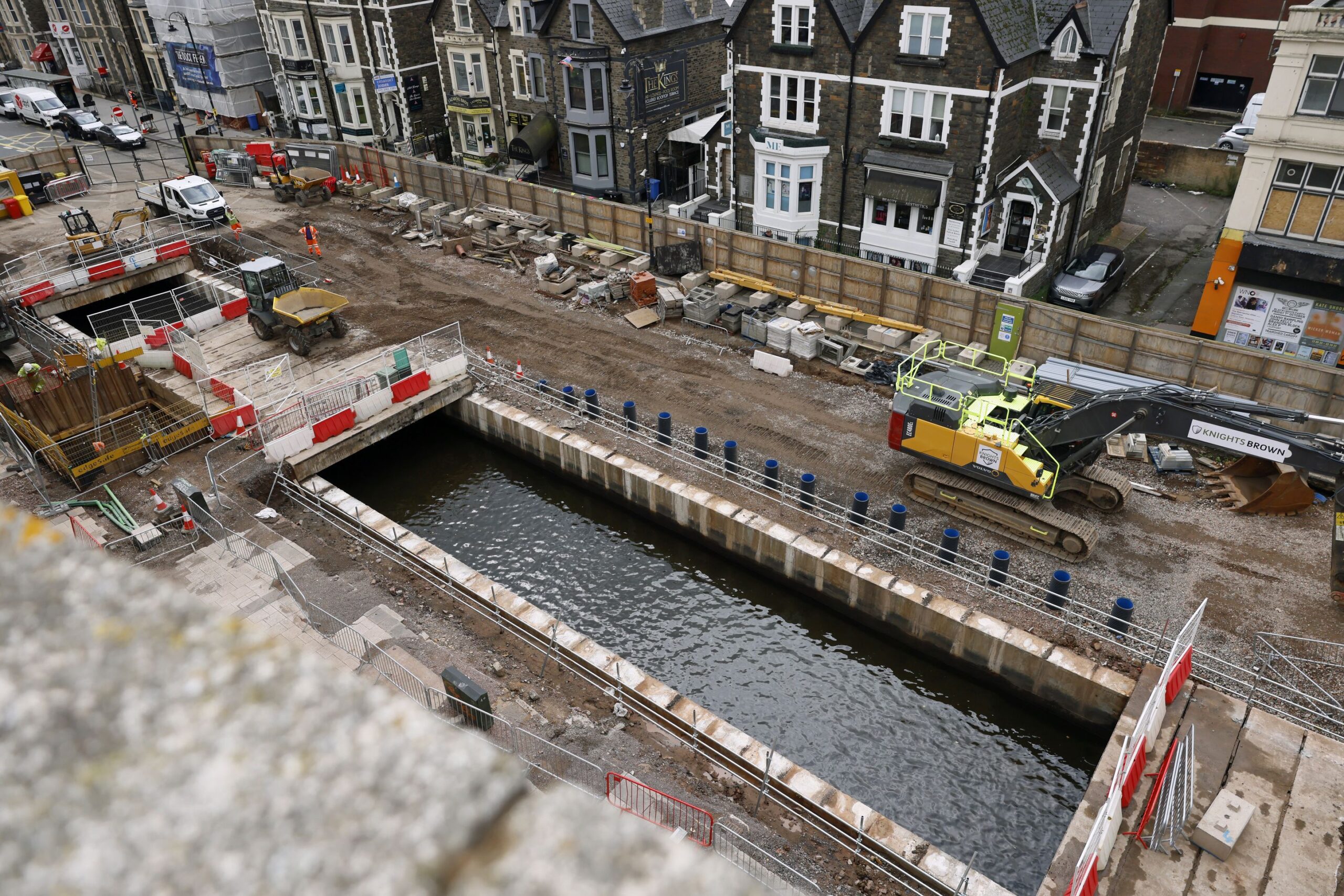Facts About Cardiff: Essential Insights into the Welsh Capital
Facts About Cardiff: Essential Insights into the Welsh Capital
Cardiff, the capital of Wales, boasts a rich history and a vibrant cultural scene. As the United Kingdom's 11th largest city, it attracts millions of tourists every year, making it an essential destination for travellers seeking new experiences and unique insights into Welsh culture. Over the years, Cardiff has undergone significant development, transforming from a small town into the bustling urban centre that it is today.
The city's origins can be traced back to its iconic castle, around which a town eventually grew. As the Welsh language name 'Caerdydd' suggests, the area has a long-standing connection to Wales' ancient past. Cardiff's growth and expansion took off in the 18th century as a result of coal and iron ore mine developments in the nearby Merthyr Tydfil area, ultimately turning Cardiff into a major port for shipping out coal. This industrial past has shaped the city's identity and contributed to its rise as the most important urban area in Wales.
History and Cultural Heritage
Cardiff, the capital of Wales, has a rich history and diverse cultural heritage. The city's development began with the establishment of coal and iron ore mines around Merthyr Tydfil in the 18th century 1. Its cultural attractions range from iconic landmarks like Cardiff Castle to modern structures like the Wales Millennium Centre.
Cardiff Castle
Cardiff Castle is a historical fortress situated in the heart of the city. It was built by the Normans in 1081 and has since undergone numerous modifications and expansions 2. The castle stands as a testament to Cardiff's medieval past and its strategic importance as a centre for trade during that time.
National Museum Cardiff
The National Museum Cardiff is a flagship cultural attraction in the city. It houses a diverse range of exhibits, including world-class art collections and artefacts from the natural world 3. The museum offers visitors an opportunity to explore Welsh culture and history as well as immerse themselves in international art and scientific discoveries.
Millennium Stadium
Now known as the Principality Stadium, the Millennium Stadium is a modern icon of Cardiff's cultural landscape. It was built in 1999 and serves as a multi-purpose venue for sports and entertainment events 4. The stadium is a symbol of Cardiff's thriving and dynamic creative capital city, exemplifying the city's ability to cater to diverse interests and sensibilities.
Footnotes
Geography and Climate
Cardiff, the capital and largest city of Wales, is situated on reclaimed marshland stretching from Chepstow to the Ely Estuary. The city rests on a bed of Triassic stones and is the natural boundary between Cardiff and the Vale of Glamorgan. Cardiff's expansion in the 18th century stemmed from the development of coal and iron ore mines around Merthyr Tydfil, which lies to the north of the city. The construction of the Glamorganshire Canal and the first dock contributed to the city's growth as well ^1^.
The climate in Cardiff is classified as temperate oceanic, which is characterised by mild temperatures and frequent precipitation throughout the year. Rainfall is relatively evenly distributed, although autumn and winter tend to be the wettest seasons. Summers in the city are often mild, with temperatures rarely exceeding 22°C (72°F). Winters are also relatively mild, with temperatures rarely dropping below freezing ^2^.
Located on the southern coast of Wales, Cardiff benefits from the moderating effect of the Atlantic Ocean, which results in relatively mild temperatures when compared to areas further inland. The city's coastal location also means that it is susceptible to occasional strong winds, especially during autumn and winter months.
In conclusion, Cardiff's geography and climate play a notable role in shaping the city's character and growth. With its mix of reclaimed marshland and coastal influences, Cardiff offers residents and visitors a unique experience shaped by its natural and historical elements.
Economy and Industry
Cardiff, the capital city of Wales, has undergone significant economic transformation in recent years. The city has moved from being a heavy industrial center to being dominated by the service sector. This shift has led to the emergence of several thriving industries, including retail and creative industries.
Retail Sector
The retail sector in Cardiff plays an important role in the city's economy. As the largest retail destination in Wales, the city boasts an array of shopping centres, independent shops, and high street retailers that cater to a wide range of consumers. The bustling city centre is home to well-known brands and flagship stores, drawing in shoppers from across the region and contributing to the overall growth of the economy.
Cardiff's retail landscape continues to evolve, with ongoing developments and investments enhancing the city's shopping experience.
Creative Industries
The creative industries in Cardiff have grown significantly in recent years, encompassing a diverse range of sectors such as film, television, digital media, and design. This growth can be attributed to the city's rich cultural heritage and its commitment to nurturing a dynamic creative ecosystem.
Cardiff has become a focal point for television production, with major studios operating in the city and producing popular programmes for both national and international audiences. The thriving creative sector has led to increased job opportunities and has played a crucial role in defining Cardiff as a vibrant, innovative city. One notable development is the new BBC Wales Headquarters, based just a 5-minute walk from our new Serviced Offices in Cardiff City Centre.
The city's commitment to supporting the creative industries is evident in initiatives such as the establishment of creative hubs, which provide resources and networking opportunities for professionals in the sector. This continuous support has further cemented Cardiff's reputation as a leading centre for creative enterprise.
Education and Research
Cardiff, the capital of Wales, is renowned for its strong emphasis on education and research. The city boasts two prominent universities that contribute to its reputation: Cardiff University and Cardiff Metropolitan University.
Cardiff University
Cardiff University, founded in 1883, is a public research university known for its commitment to providing high-quality education and impactful research. Its strategic ambition is to be consistently ranked among the top 100 universities in the world and the top 20 in the UK. The university offers a wide range of undergraduate and postgraduate programmes across various disciplines, from arts and humanities to science and engineering.
Cardiff University is also renowned for its research excellence. The institution collaborates with various industries, policymakers, and international partners to advance knowledge and promote innovation. Additionally, the university is undertaking a £600m investment in its campus facilities to enhance the learning and research environment for both students and staff.
Cardiff Metropolitan University
Cardiff Metropolitan University, established in 1865, is another prestigious institution of higher learning in the city. The university is focused on offering career-oriented education, emphasising practical experience and professional development. With a diverse range of undergraduate and postgraduate courses in disciplines such as art and design, business and management, and sports and health sciences, the institution caters to the needs of students looking to advance their careers.
Cardiff Metropolitan University prides itself on its strong links with businesses and employers, enhancing the employability of its graduates. Furthermore, research at Cardiff Metropolitan University directly impacts the wider community, with research centres that focus on areas such as entrepreneurship, product design, and biomedical sciences.
In conclusion, Cardiff is a thriving hub for education and research, with Cardiff University and Cardiff Metropolitan University demonstrating the city's commitment to academic excellence and its strong connections to industries and international partners.
Cardiff City Canals: An Informative Guide to the Waterways
Cardiff City Canals: An Informative Guide to the Waterways
Cardiff, the bustling capital of Wales, holds a treasure trove of hidden history beneath its streets. Among these secrets are the city's lost canals, which played a vital role in its past, serving as transport routes for supplies and aiding in the city's growth and development. In recent years, efforts have been made to uncover and restore these hidden waterways to celebrate Cardiff's rich heritage and reinvigorate the cityscape.
The Dock Feeder Canal, for instance, was paved over for more than seven decades but has finally been uncovered in the city centre, generating renewed interest in the city's historic canals. As more people learn about these fascinating waterways, Cardiff's canal quarter provides a unique opportunity to appreciate the city's past while also envisioning a vibrant future that merges history with modern city planning.
Uncovering the Dock Feeder Canal and other lost waterways forms part of an ambitious plan for Churchill Way, aiming to revitalise the area and create a connection between Cardiff's past and present. The project has sparked interest among residents and tourists alike, as it highlights the crucial role that canals played in shaping Cardiff into the dynamic city it is today.
Cardiff's Canal History
Glamorganshire Canal
The Glamorganshire Canal was a 25-mile long waterway that connected Merthyr Tydfil to Cardiff in Wales, which played a crucial role in the transport of coal and iron during its time. The canal was masterfully engineered, utilising a system of locks and aqueducts to efficiently transport goods across the region's topography. The canal was an important part of Cardiff's early development, facilitating the growth of the city as a bustling industrial hub.
Industrial Revolution
Cardiff's canals were vital during the Industrial Revolution, as they allowed for the effective transportation of raw materials like coal and iron. The canals, specifically the Glamorganshire Canal, facilitated the booming coal and steelwork industries in South Wales. These industries saw massive growth during the late 18th and early 19th centuries, and the canals played a key part in supporting their expansion, allowing for the efficient movement of goods to markets and ports.
Profitable Canals
Cardiff's canals proved to be extraordinarily profitable during their peak years, with cargo volume and economic impact reaching unprecedented levels. The steady flow of coal and iron from Merthyr Tydfil to Cardiff played a significant role in the city's growth and prosperity. However, there were other industries and trade that also benefited from the canals, such as building materials, foodstuff, and agricultural products that helped to support the local economy.
Canal and Rail Competition
The introduction of railways brought about a new era of transportation, directly competing with and eventually surpassing the canal systems. Companies such as the Great Western Railway began to establish their presence in the region, constructing more extensive rail networks that could transport goods faster and over greater distances. As a result, horse-drawn barges became less efficient, and the canal's usage started to decline. Despite the decline, the remnants of Cardiff's old canals still hold historical significance today, featuring under the stewardship of organisations like the Canal and River Trust.
Cardiff Docks and Waterways
Old Dock Feeder Canal
The Old Dock Feeder Canal played a crucial role in the growth of Cardiff as an industrial city. It was constructed to bring iron and steel from the 25-mile-long Glamorganshire Canal which originated from Merthyr Tydfil to Cardiff docks. Moreover, the canal also provided water to the docks, enabling them to operate efficiently. Cardiff Castle and the surrounding Cathays Park played a significant role, as they were situated close to the feeder canal system, providing a breathtaking view of the waterways and green spaces.
Amphitheatre
An intriguing attraction close to Cardiff's waterways is the amphitheatre, which reflects on the area's rich cultural history. Situated near the Old Dock Feeder Canal, the amphitheatre is reminiscent of the time when the canals were buzzing with activity, showcasing various performances and events.
Cardiff Bay
Cardiff Bay has come a long way from its industrial roots. The transformed waterfront now offers bustling entertainment venues, retail spaces, and leisure facilities, making it an iconic destination for both locals and tourists alike. The three-mile-long canal that once supplied water to the docks in Cardiff Bay can still be seen today, a testament to the area's heritage.
The docks, waterways, and bridges within Cardiff Bay play an essential role in connecting the region. Blackweir, for instance, is one of the bridges that facilitate easy access to various points of interest within the city.
Alongside Cardiff's extensive history of docks and waterways, modern developments have breathed new life into the area. Churchill Way, which lies above parts of the hidden canal, is a prime example of the city's continuous evolution. As Cardiff continues to grow, its historic waterways and iconic landmarks such as the amphitheatre and Cardiff Castle remain a testament to its rich past.
The blend of Cardiff's old and new elements showcases the city's ability to preserve its heritage while adapting to modern times. The docks and waterways, once the backbone of Cardiff's industrial growth, now stand as a reminder of the city's fascinating history, offering scenic views and contributing to its lively atmosphere.
Canal Quarter Redevelopment
Mixed-Use Development
The Canal Quarter is a significant redevelopment project in Cardiff aimed at reviving the city's historic canal and its surrounding areas. The project includes a mix of residential, retail, and leisure spaces, catering to the diverse needs of the local community. The plan also involves Barrack Lane, which will host a range of shops and homes. This ambitious initiative promises to create a vibrant, modern environment, attracting investment and boosting the local economy.
Public Spaces
Apart from the mixed-use development, a key aspect of Canal Quarter is the creation of attractive public spaces. These include rain gardens for sustainable rainwater management, outdoor seating areas where residents and visitors can unwind, and improved pedestrian and cycleway connections. The plan also includes the enhancement of green spaces, such as Bute Park, to provide a pleasant environment for people to enjoy, promoting well-being and healthy living.
Modern Canal Infrastructures
One significant part of the Canal Quarter redevelopment is the modernisation of the canal infrastructure. The aim is not only to restore its historical importance but also to improve the surface water drainage system and reduce reliance on the existing sewage system and pumping stations. The project will include upgraded footbridges and better crossings that will enhance traffic flow around the area. Additionally, new measures will be implemented to prevent pollutants from entering the canal, ensuring a cleaner, eco-friendly environment for both residents and wildlife.
Cardiff's Canal Transport
Horse-Drawn Canal Barges
The Glamorganshire Canal, a 25-mile-long waterway, once played a vital role in Cardiff's industrial development. Opened in 1794, it connected Merthyr Tydfil and Cardiff to transport coal, iron, and steel to the city. At the height of its use, horse-drawn canal barges carried heavy cargo over long distances. These barges were not only efficient, but they also helped the booming industries by providing an environmentally friendly mode of transport. The horses provided the power needed to pull the barges on the towpath alongside the canals, contributing to the economic growth of Cardiff during this period.
Rail Transport
As the Industrial Revolution progressed and industry grew, more efficient means of transportation were needed. The introduction of railways in the 19th century marked the beginning of a new era in transport, decreasing the reliance on waterways, especially the Glamorganshire Canal. With railway travel, goods could be transported faster, more efficiently, and over greater distances than was possible with horse-drawn canal barges.
The arrival of rail transport led to the gradual decline of the canal system in Cardiff. Despite the continued use of canals for some years, the importance and utility of these waterways dwindled as railways took over as the primary means of transporting goods.
Motor Transport
In the 20th century, motorised transport became increasingly prominent in Cardiff. The development of motorways and motor vehicles allowed for faster and more efficient movement of goods and people, further diminishing the need for canals. Cardiff Council, along with other government bodies such as the RAF, invested in improving roads, paving the way for the thriving motor transport industry we see today.
As a result, the Glamorganshire Canal and other waterways in the city were eventually abandoned and filled in, with many now hidden beneath modern infrastructure. Today, Cardiff's transport network relies primarily on railways and motorways as the backbone of its transportation needs.


